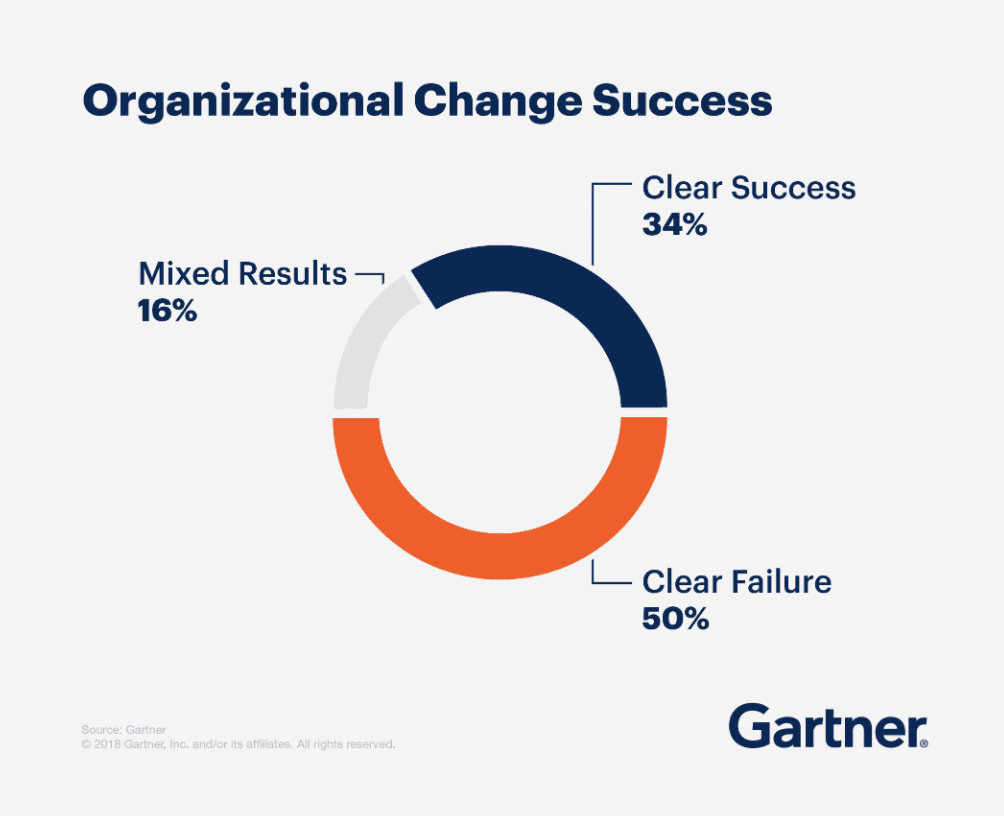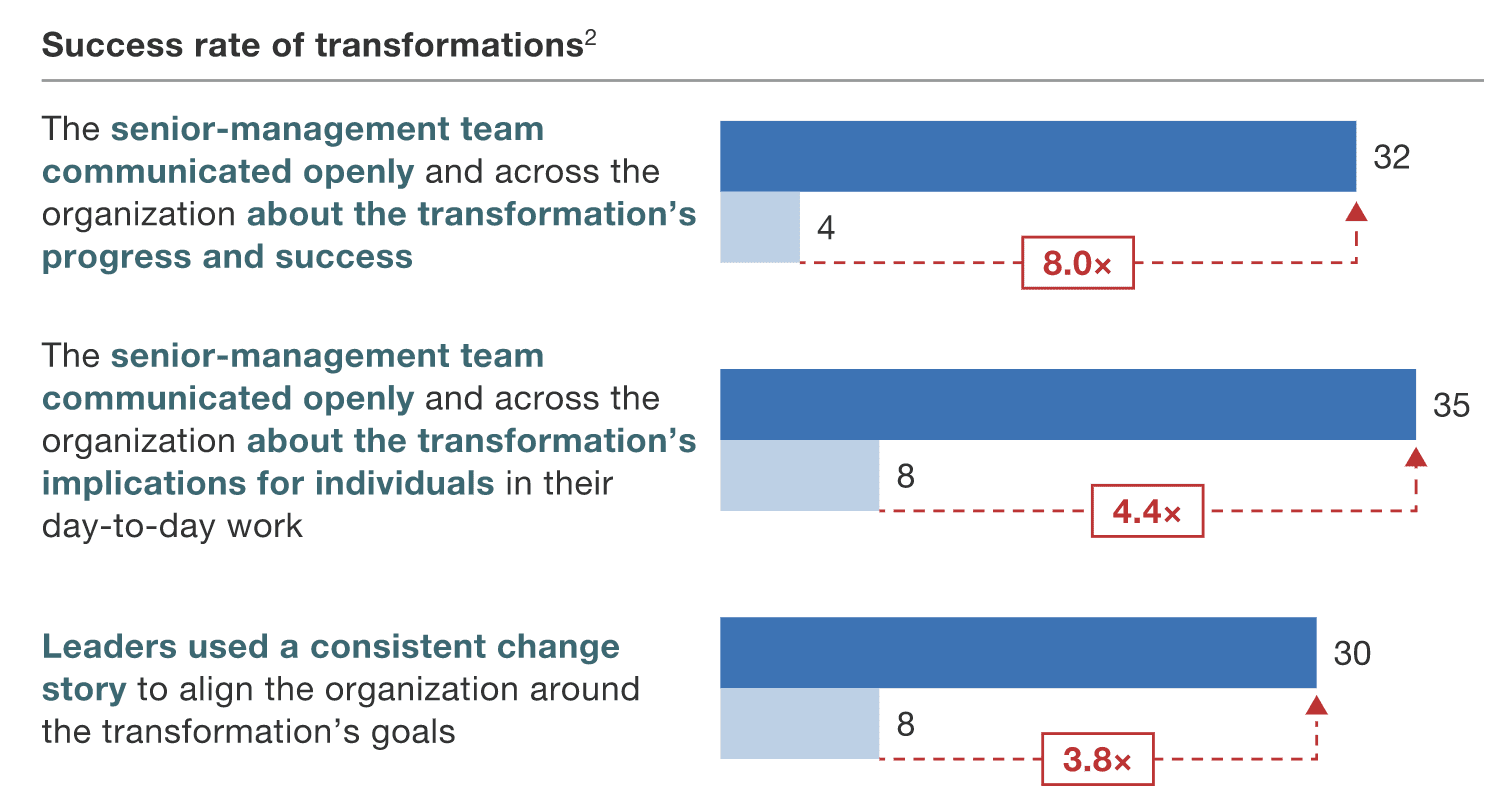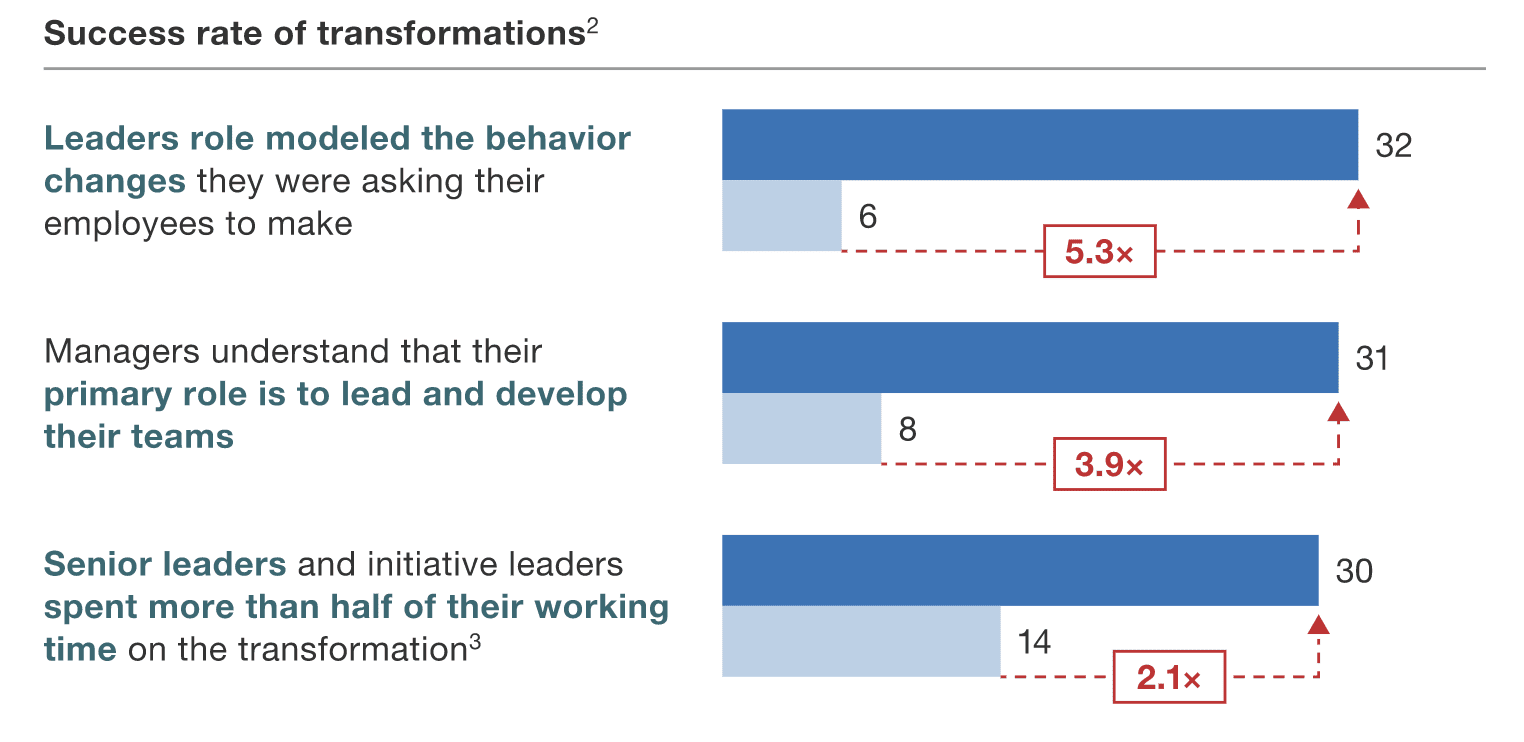In the past decade, companies from Facebook to IBM have gone through massive transformations. Change management as a concept has prevailed for more than half a century and many academics, consultants, and managers of organizations have explored in detail the organizational culture, communication, and employee attitudes that are affected by the change.
Despite many studies on change management theory, change management in practice has proved to be challenging. A report by Gartner in 2019 states that though nearly 75% of the workforce expects to multiply the types of major change initiatives they will undertake in the next three years, half of them expect to see the change initiatives fail.

Harvard Business Review states that a reason for this could be that, ‘the content of change management is reasonably correct, but the managerial capacity to implement it has been woefully underdeveloped.’
But is the burden of effective change management only the concern of top management? If everyone in your organization resonates with change management, what role should they play to ensure a smooth transition into something new?
What is different about change management in SaaS?
With the global pandemic forcing companies to go remote and SaaS products being easy to adopt and implement, Gartner anticipates SaaS to generate nearly $105 billion in revenue in 2020 alone. With SaaS products and their adoption evolving at a massive speed, it seems to be recession-proof as well.
However, the flip side is that the software buying model is different. The initial model was sales-driven with a focus on the IT departments which bought the software and rolled it out to the entire organization. But in today’s world, the end-user gets to decide on the software they want to use on a daily basis. Since buyers at sales or marketing do not necessarily care about change management at an organization level, the full potential of the software is often overlooked.
So, SaaS businesses need to tweak their customer success strategies a notch up to cross-sell or up-sell after understanding the problem the software is trying to solve for the organization.
Context of Change in SaaS
Software developers use the term ‘change management’ loosely. Software solutions tend to be more rigid and change refers to the upgrades or different versions released on a frequent basis. Indium, a software testing firm says, “Each time the SaaS application is upgraded, there is a need for users to understand the changes that the application went through, the effect of the changes, the validation of the application against existing systems, and ensuring that the app upgrade does not affect existing features negatively.”
This gives more reason for SaaS companies to provide a brief demo to its users and make them understand the changes to the product.
Steps to manage change effectively
Since the software comes as a plug-and-use solution oftentimes, companies assume it’ll be easier for employees to adapt to it which couldn’t be farther from the truth. Setting up a change management process is crucial to not only prepare your employees for the change but also to plan out exactly which tools you’re going to implement and how they’re going to work together within your environment.
Step 1# Understand the problem, solution, and your employees
The first step to introducing change would be to understand the touchpoints and processes that would be affected by the software. Conduct an impact study by doing the following,
- Understand how many people would be affected by the change and at what stage in the process.
- Understand how often they are using the current technology or how often they would use the new software for their work.
Step 2# Strengthen your common purpose through communication
Once this knowledge is there, it is vital to make the user group affected by the change to understand the benefits of the software being used.
- Why change? – Explain to the employees the reason behind the change. This would give you the opportunity to talk about the bigger picture or the overall impact the change would have on the organization. Tell them your future vision for the organization and how this change brings them closer to it.
- What’s in it for them? – While conveying the benefits of the product to the users, let them know what’s in it for them. Showing the employees how this product would make their life easier would help them embrace the new technology and contribute to the software’s ROI.
- How do their roles change? – Allocate responsibility with the help of clear KPIs that would give your employees direction and ensure that the product is used efficiently. Attaching KPIs to change initiatives, not only helps people get on board the new software quickly but also helps them understand how this change affects them.
A study by McKinsey on organizational transformation showed that when the senior management is transparent about the progress or success of the change, the change was eight times more likely to be successful.

Many implementations fail because the organization does not use new technology as it is supposed to be used. This is because they do not understand the entire value that the software can offer. The management doesn’t get to see the full ROI and the software is discontinued soon.
Step 3# Create a clear implementation plan
The impact study would give you a clear picture of the amount of training required by each person for them to utilize the software to its full potential. A detailed plan for training should be drafted based on this.
A study by McKinsey on organizational transformation says that employees tend to model the behavior of their senior management and when this management leads with a positive attitude towards change, transformations are 5-times more likely to be successful.

Chart out timelines to at least train crucial members in the team on how to use the software. A hub and spoke model can be adopted where trained people train others and so on.
Learning something new always has a mixed reaction. Some people are excited about the change and others hate being disturbed from their routine. To keep employee motivation at its high, invest in internal marketing techniques. Create one-pagers, graphics, animated videos, and trivia contests to educate people on the benefits of the new tool and also motivate them to use it. Keeping people on-board from day zero, even during the planning stages, would help to enable a smooth transition.
Step 4# Build Momentum by taking action
Often people are unaware that a change is more difficult because the people working on the processes are too involved in the problem. Bryan Walker, Partner and Managing Director at IDEO states, “Start with mobilizing people around a purpose, then create momentum through action (tangible quick wins to get people to believe that the change is possible), and then scale and sustain that change.”
Quick wins help to build momentum by addressing small and easy-to-fix issues within an organization. This helps to bring in confidence in the change-maker with the leadership team who then might show less resistance to larger and complex recommendations. It also helps gain the trust of front-line staff who see first-hand the impact of business changes.
Small changes in a few departments of the organizations can lead to massive ripples across the organization. Identify the key champions of change who harness change and embrace innovation within each team and with their help, drive the implementation and adoption of the software across multiple teams in the organization.
Step 5# Scale and sustain
It is never easy to be an agent of change. You are going against the norm and this could lead to many friction points or setbacks across the journey. However, your perspective and the respective actions you take in these instances can make all the difference.
- Identify bottlenecks immediately and don’t let confusion prevail for a long time.
- Tie up OKRs in such a way that they represent the success of the software implementation. Track each OKR and see if it was achieved or failed. Understand the reasons for both the outcomes and modify the OKRs accordingly.
- Find out if the software is being used to its fullest potential and if not re-educate the people involved in the process again.
- Track feedback from users of the software on a regular basis. Conduct polls or ask them to fill out feedback forms through emails. This would help you understand if the users need any further customization that would improve the user interface.
Change management gives you a chance to reinvent the wheel. It gives you an opportunity to let others create their own wheels too. And remember, people, support what they create. So instead of selling an idea, you want to bring everyone to work together and create something together. In the end, you build a movement and unless everyone in the organization views it as their idea, it would be hard to make the change effective.
As an ode to the champions we know, we are bringing together the largest gathering of Champions of Change with more than 20 speakers on a single platform to tear into the stories behind the transformations they brought about.
Do you identify yourself as a Champion of Change at your organization or think that a colleague of yours is one? Write back to sinduja.p@chargebee.com to get in touch with us.





